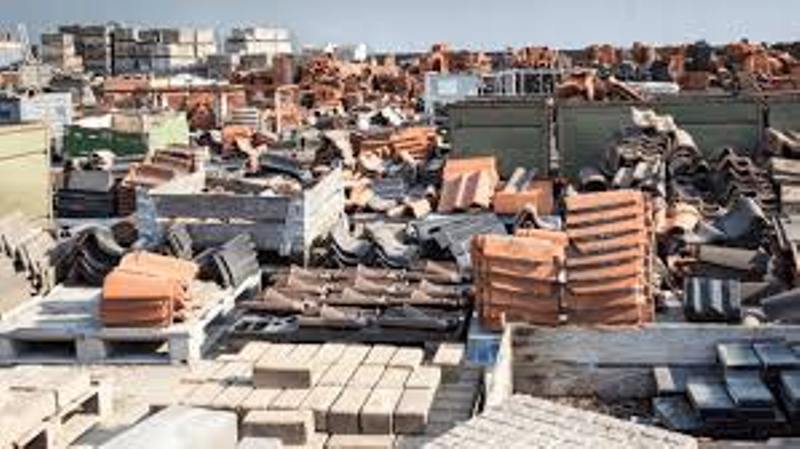By Sanjay Seth
The built environment, a symbol of progress, now stands as one of the largest contributors to global emissions. Once described as “living machinery” where materials, technologies and human ingenuity converge to create spaces of shelter and comfort, this very system designed to serve humanity now demands urgent transformation to reduce our collective carbon footprint and mitigate the climate crisis.
Buildings are more than bricks and mortar — they are complex systems made up of materials, water network, electrical works, HVAC (heating, ventilation and air- conditioning) technologies and human interaction. Their creation and operation require collaboration among architects, engineers, urban planners, policymakers, construction material producers, green tech innovators, landscapers, facility managers and end-users. Each component contributes to the building’s overall carbon footprint.
Latest reports suggest that globally the built environment is responsible for nearly 40 percent of energy-related CO₂ emissions, with approximately 10 percent attributed to the production of building materials and 28 percent to energy consumed during building operations.
In 2022, direct CO₂ emissions from buildings were around 3 gigatonnes (Gt), while indirect emissions — linked to production of electricity for heating and cooling — rose to nearly 6.8 Gt. Additionally, another 2.5 Gt of CO₂ emissions were associated with building construction materials. These figures highlight the urgent need for systemic change.
Modern buildings are built with steel and concrete – the bulwark of modern construction. With rapid urbanisation and a projected 15 percent global increase in building stock by 2030 — equivalent to North America’s total floor area — the sector faces significant sustainability challenges. Government initiatives and rising economic demands are driving this expansion, positioning India as a key player in global decarbonisation efforts.
India’s building stock is poised for an astonishing expansion, with a projected nearly four-fold surge in the residential sector and an astounding 7.5-fold escalation in the commercial sector by 2047 compared to 2017 levels, resulting in a total built-up area of 59.3 billion sq mts. Emerging economies such as India are expected to contribute nearly 80 percent of global floor area growth, further escalating energy demand.
As the world’s second-largest cement producer, India boasts a relatively moderate emission intensity of 0.627 tCO₂/ton, which surpasses the global average and contrasts sharply with the higher intensities of 0.781 in the US and 0.739 in the UK.
Reducing carbon footprint
However, as demand rises, the cement sector will need to adopt innovative solutions to maintain this trajectory while reducing its overall carbon footprint. Similarly, the steel industry, contributing to 12 percent of India’s emissions, highlights another layer of challenge. Steel production is expected to expand, predominantly through the carbon-intensive processes. Emissions from this sector are projected to rise until 2050, reinforcing the urgency for technological and policy interventions to mitigate its environmental impact.
The built environment’s heavy reliance on cement and steel — two industries with limited scalable alternatives — presents a significant decarbonisation challenge. This prioritises the adoption of sustainable alternatives, such as bio-based composites, recycled steel and low-carbon cement, while transitioning to cleaner energy sources like hydrogen, solar and wind.
Additionally, exploring advanced carbon capture, utilisation and storage (CCUS) technologies, which capture carbon before it is released and securely store or repurpose it, could play a critical role in mitigating emissions. Architects and planners must integrate passive design strategies — such as insulation, natural ventilation, daylighting and solar shading — that are tailored to local climate conditions.
Besides, adopting circular design principles can minimise waste, promote end-of-life material reutilisation and enhance resource efficiency. Prioritising retrofitting and adaptive reuse of existing structures will further reduce environmental impact while ensuring sustainable urban development.
Facility managers and end-users also have a key role to play by adopting energy-efficient operational practices and fostering a culture of sustainability in building management. Achieving decarbonisation will require a concerted effort from all stakeholders, driven by innovation and shared responsibility.
India has already taken strides with market-driven climate solutions like the Perform, Achieve and Trade (PAT) scheme which incentivises energy efficiency in high-emission industries. The Renewable Energy Certificates (RECs) promote clean energy adoption, contributing to reductions in industrial carbon footprints.
The Indian Carbon Market (ICM), with its compliance framework and voluntary offset system, offers promising solutions, although the delayed launch of the Carbon Credit Trading Scheme (CCTS) in 2025-26 has slowed its full potential. India’s ability to harness innovative financial instruments and enforce progressive policies will determine how effectively it can lead the global shift toward a net-zero built environment.
The urgency is undeniable. The IEA warns that building sector emissions must decline by 9 percent annually to stay on track for net-zero, with a 50 percent reduction required by 2030. With global temperatures surpassing the 1.5°C threshold in 2024, the demand for energy-intensive cooling is rising due to heatwaves and extreme climate events.
Balancing thermal comfort — an essential factor for public health, productivity and economic growth — against escalating operational costs will further complicate India’s decarbonisation efforts. As a climate-vulnerable nation, India faces mounting pressure to align its Viksit Bharat 2047 mission with global climate goals.
Unique opportunity
However, India’s rapid urbanisation presents a unique opportunity to lead the transition toward a sustainable built environment. The decisions made today will shape the future of our cities, determining whether they evolve into climate-responsive, resilient spaces or remain trapped in a costly cycle of inefficient structures requiring frequent retrofits.
While the upfront costs of sustainable interventions may seem significant, failing to act now could result in more exorbitant financial burdens from retrofitting and rebuilding in the face of climate risks. A forward-thinking approach is essential to avoid this structural and financial burden.
Success in this transformation hinges on intensive collaboration among policymakers, architects, urban planners, construction stakeholders and material producers. Achieving this vision requires strong leadership, bold policies, coordinated action and partnerships.
Collaboration is the cornerstone of implementing a sustainable future. The theme of this year’s Sustainable Development Summit, ‘Partnerships for Accelerating Sustainable Development and Climate Solutions’, highlights the transformative power of collective action.
In the face of climate challenges, strategic partnerships serve as a catalyst for innovation, bringing together diverse stakeholders around shared objectives. By fostering cross-disciplinary collaboration, innovative solutions and scale-sustainable practices can be unlocked. This will drive meaningful change throughout the building and construction industry.
Initiatives such as GRIHA’s rating systems and TERI’s collaborative efforts play a vital role in setting sustainability benchmarks and pushing for policy integration. Through various programmes, India is advancing research in low-carbon materials and climate-responsive design. Policy advocating public-private partnerships will be crucial in transforming research into real-world solutions, driving investment and ensuring long-term climate resilience.
As a key player in the Global South, India’s decisions in the next decade will determine whether it leads the way in sustainable construction or faces the expensive consequences of inaction. The path India chooses today will not only shape its journey toward Viksit Bharat but also define its economic future and commitment to achieving net-zero emissions by 2070.
The built environment must not only stand as a testament to progress but also to sustainability, resilience and a shared vision for a net-zero future.
Sanjay Seth is a Senior Director at TERI and Vice President and CEO for GRIHA Council, New Delhi.
Sheen Pandita is a Research Associate and Area Convenor, Sustainable Buildings Division at TERI, New Delhi.
This article was jointly commissioned by Griha (Green Rating for Integrated Habitat Assessment) Council, TERI and 360info.
Originally published under Creative Commons by 360info™.















